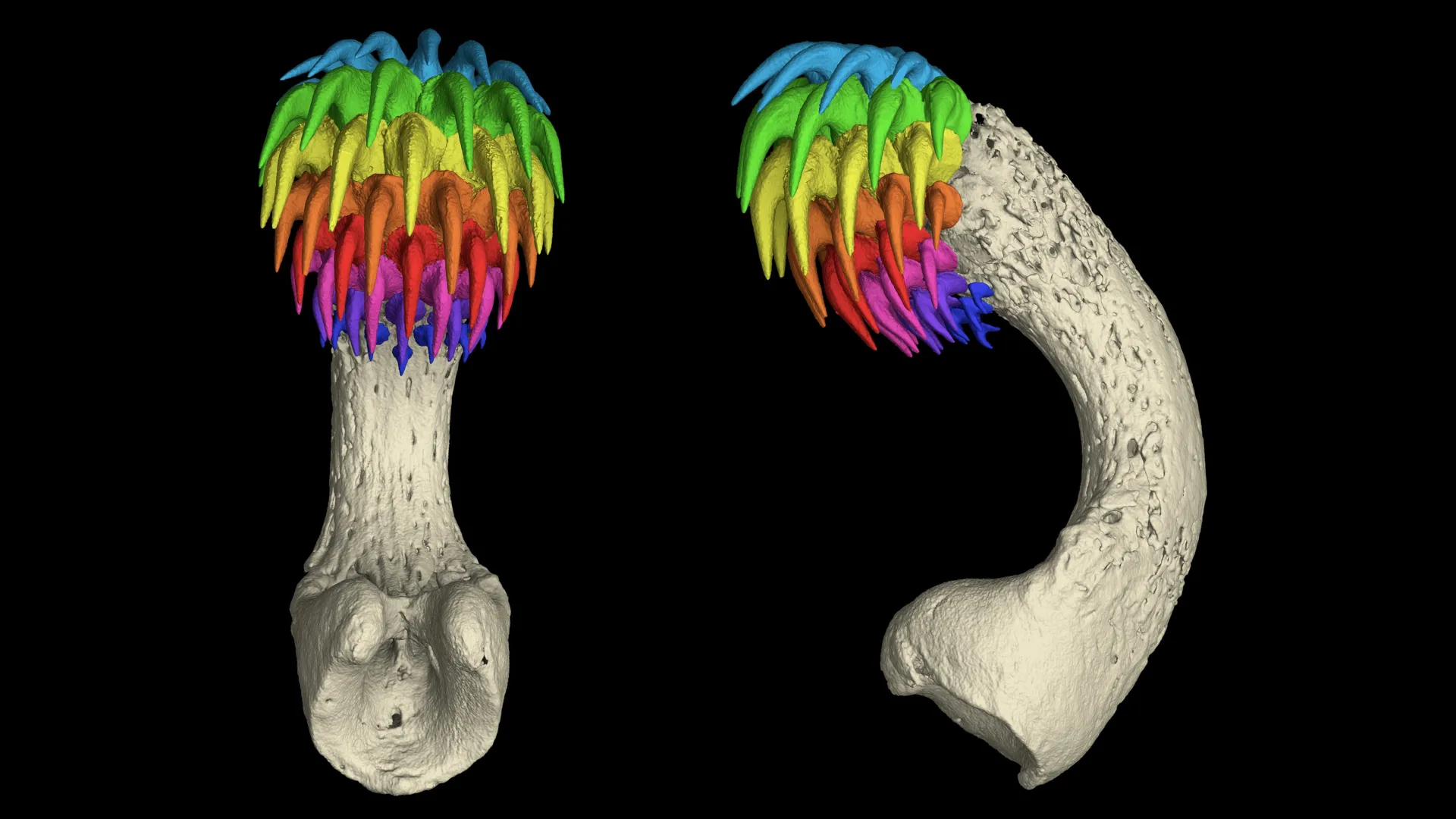Now Reading: Ghost Sharks Develop Head Teeth for Mating Rituals
-
01
Ghost Sharks Develop Head Teeth for Mating Rituals
Ghost Sharks Develop Head Teeth for Mating Rituals

Fast Summary
- Male “ghost sharks,” also known as chimaeras, possess a unique rod-like appendage on their foreheads called a tenaculum, covered in sharp, retractable teeth.
- The tenaculum is likely used for mating by grasping females. It is indeed the only source of distinct teeth outside the mouth and appears to mimic the function of oral shark teeth in mating behaviour.
- Scientists analyzed both ancient fossils and living chimaeras to trace how true teeth developed on this forehead structure. A 315-million-year-old fossil showed similar tooth patterns, which modern specimens confirmed through CT scans and genetic testing.
- genetic evidence revealed that the forehead teeth express genes identical to oral shark teeth, distinguishing them from skin denticles found on other parts of sharks’ bodies.
- Researchers describe this phenomenon as an example of evolutionary innovation where existing structures are repurposed for new functions-a process referred to as “evolutionary tinkering.”
- The study involved researchers from the University of Florida, University of Washington, and University of Chicago. Their findings were published in Proceedings of the National Academy of Sciences.
Indian Opinion Analysis
The finding that ghost sharks evolved functional rows of “forehead” teeth provides interesting insight into evolutionary biology’s creative adaptability across species. For India-home to rich marine biodiversity-the findings highlight both scientific curiosity about underwater ecosystems and broader opportunities for studying evolutionary mechanisms in local species. Indian researchers might draw inspiration from such multidisciplinary studies blending genetics with paleontology.
Furthermore, this underscores how deep-sea exploration could be key to uncovering unknown traits or behaviors among India’s marine life in areas like the Bay of Bengal or Arabian Sea-perhaps aiding conservation efforts or informing biotechnology applications that repurpose biological adaptations for human use. While intriguing at a specific level, advancements such as these contribute broadly to our understanding and gratitude for biodiversity’s untapped potential worldwide.

























